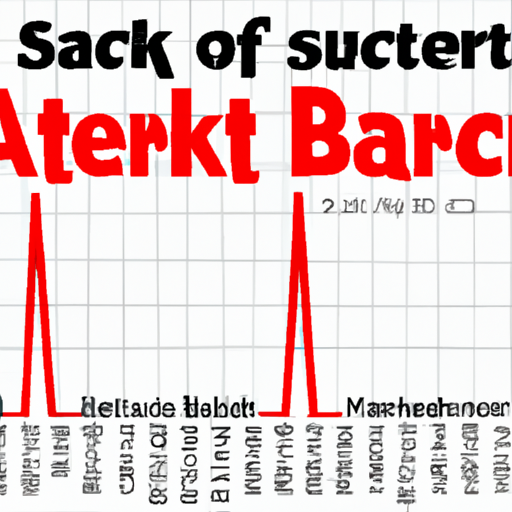Heart Attack Statistics

The Most Common Risk Factors for Heart Attack: What You Need to Know
If you’ve ever had a heart attack or know someone who has, you know how serious it can be. Heart attacks are the leading cause of death in the United States, and it’s important to understand the risk factors that can lead to one. Here’s what you need to know about the most common risk factors for heart attack.
High Blood Pressure: High blood pressure is one of the most common risk factors for heart attack. It’s important to keep your blood pressure in check by eating a healthy diet, exercising regularly, and managing stress.
High Cholesterol: High cholesterol is another major risk factor for heart attack. Eating a diet low in saturated fat and cholesterol can help keep your cholesterol levels in check.
Smoking: Smoking is a major risk factor for heart attack. If you smoke, quitting is the best way to reduce your risk.
Diabetes: People with diabetes are at an increased risk of heart attack. It’s important to manage your diabetes with diet, exercise, and medication.
Obesity: Being overweight or obese increases your risk of heart attack. Eating a healthy diet and exercising regularly can help you maintain a healthy weight.
Family History: If you have a family history of heart attack, you may be at an increased risk. Talk to your doctor about your family history and what you can do to reduce your risk.
Age: As you get older, your risk of heart attack increases. It’s important to take steps to reduce your risk, such as eating a healthy diet and exercising regularly.
These are the most common risk factors for heart attack. If you’re at risk, talk to your doctor about what you can do to reduce your risk. Taking steps to reduce your risk can help you stay healthy and reduce your chances of having a heart attack.
The Latest Heart Attack Statistics: What You Need to Know
Are you concerned about your heart health? If so, you’re not alone. Heart disease is the leading cause of death in the United States, and heart attacks are a major contributor to this statistic. To help you stay informed, here’s a look at the latest heart attack statistics and what they mean for you.
According to the Centers for Disease Control and Prevention (CDC), about 735,000 Americans have a heart attack each year. Of those, about 525,000 are first-time heart attacks and 210,000 are recurrent attacks. Men are more likely to have a heart attack than women, and the risk increases with age.
The good news is that the death rate from heart attacks has been declining in recent years. In 2017, the death rate from heart attacks was about 25% lower than it was in 1999. This is likely due to improved treatments and better access to medical care.
When it comes to preventing heart attacks, there are several steps you can take. Eating a healthy diet, exercising regularly, and not smoking are all important steps. Additionally, it’s important to keep your blood pressure and cholesterol levels in check. If you have any risk factors for heart disease, such as diabetes or a family history of heart disease, talk to your doctor about ways to reduce your risk.
Knowing the latest heart attack statistics can help you stay informed and take steps to protect your heart health. By making lifestyle changes and talking to your doctor, you can reduce your risk of having a heart attack.
The Impact of Gender on Heart Attack Risk: What You Need to Know
When it comes to heart attack risk, gender matters. While both men and women can suffer from heart attacks, the risk factors and symptoms can vary significantly between the two genders. Knowing the differences can help you better understand your risk and take steps to reduce it.
For men, the risk of a heart attack increases with age. Men over the age of 45 are more likely to suffer from a heart attack than women of the same age. Men are also more likely to have high blood pressure, high cholesterol, and diabetes, all of which can increase the risk of a heart attack.
For women, the risk of a heart attack increases after menopause. Women over the age of 55 are more likely to suffer from a heart attack than men of the same age. Women are also more likely to have high blood pressure, high cholesterol, and diabetes, all of which can increase the risk of a heart attack.
When it comes to symptoms, men and women can experience different signs of a heart attack. Men may experience chest pain, shortness of breath, and pain in the arms, neck, or jaw. Women, on the other hand, may experience nausea, fatigue, and pain in the back or jaw.
It’s important to be aware of the risk factors and symptoms associated with heart attacks, regardless of gender. If you’re at risk, talk to your doctor about ways to reduce your risk, such as quitting smoking, exercising regularly, and eating a healthy diet. Taking these steps can help you reduce your risk of a heart attack and lead a healthier life.
The Role of Genetics in Heart Attack Risk: What You Need to Know
When it comes to heart attack risk, genetics can play a major role. While lifestyle factors such as diet, exercise, and smoking can all contribute to heart attack risk, genetics can also be a major factor. Knowing your family history and understanding the role of genetics in heart attack risk can help you make informed decisions about your health.
First, it’s important to understand that heart attack risk is determined by a combination of both genetic and environmental factors. While some people may be genetically predisposed to heart attack risk, lifestyle choices can also play a major role. That’s why it’s important to make healthy lifestyle choices, such as eating a balanced diet, exercising regularly, and avoiding smoking.
It’s also important to understand that certain genetic conditions can increase your risk of heart attack. For example, if you have a family history of high cholesterol, you may be at an increased risk of heart attack. Other genetic conditions, such as hypertrophic cardiomyopathy, can also increase your risk.
If you’re concerned about your heart attack risk, it’s important to talk to your doctor. Your doctor can help you understand your family history and assess your risk factors. They can also help you make lifestyle changes that can reduce your risk.
Finally, it’s important to remember that genetics is only one factor in heart attack risk. While it’s important to be aware of your family history and genetic conditions, it’s also important to make healthy lifestyle choices. Eating a balanced diet, exercising regularly, and avoiding smoking can all help reduce your risk of heart attack.
Understanding the role of genetics in heart attack risk can help you make informed decisions about your health. Talk to your doctor about your family history and risk factors, and make sure to make healthy lifestyle choices to reduce your risk.
The Role of Diet and Exercise in Reducing Heart Attack Risk: What You Need to Know
Heart attacks are a serious health concern, and reducing your risk of having one is essential for maintaining a healthy lifestyle. Diet and exercise are two of the most important factors in reducing your risk of a heart attack. Here’s what you need to know about how diet and exercise can help you reduce your risk of a heart attack.
Diet
Eating a healthy diet is one of the best ways to reduce your risk of a heart attack. Eating a diet that is low in saturated fat, trans fat, and cholesterol can help reduce your risk of a heart attack. Eating plenty of fruits, vegetables, and whole grains can also help reduce your risk. Additionally, limiting your intake of processed and sugary foods can help reduce your risk.
Exercise
Exercise is another important factor in reducing your risk of a heart attack. Regular physical activity can help reduce your risk of a heart attack by improving your overall cardiovascular health. Aim for at least 30 minutes of moderate-intensity physical activity most days of the week. This can include activities such as walking, jogging, swimming, or biking.
Conclusion
Diet and exercise are two of the most important factors in reducing your risk of a heart attack. Eating a healthy diet that is low in saturated fat, trans fat, and cholesterol and limiting your intake of processed and sugary foods can help reduce your risk. Additionally, regular physical activity can help reduce your risk of a heart attack by improving your overall cardiovascular health. By following these tips, you can help reduce your risk of a heart attack and maintain a healthy lifestyle.